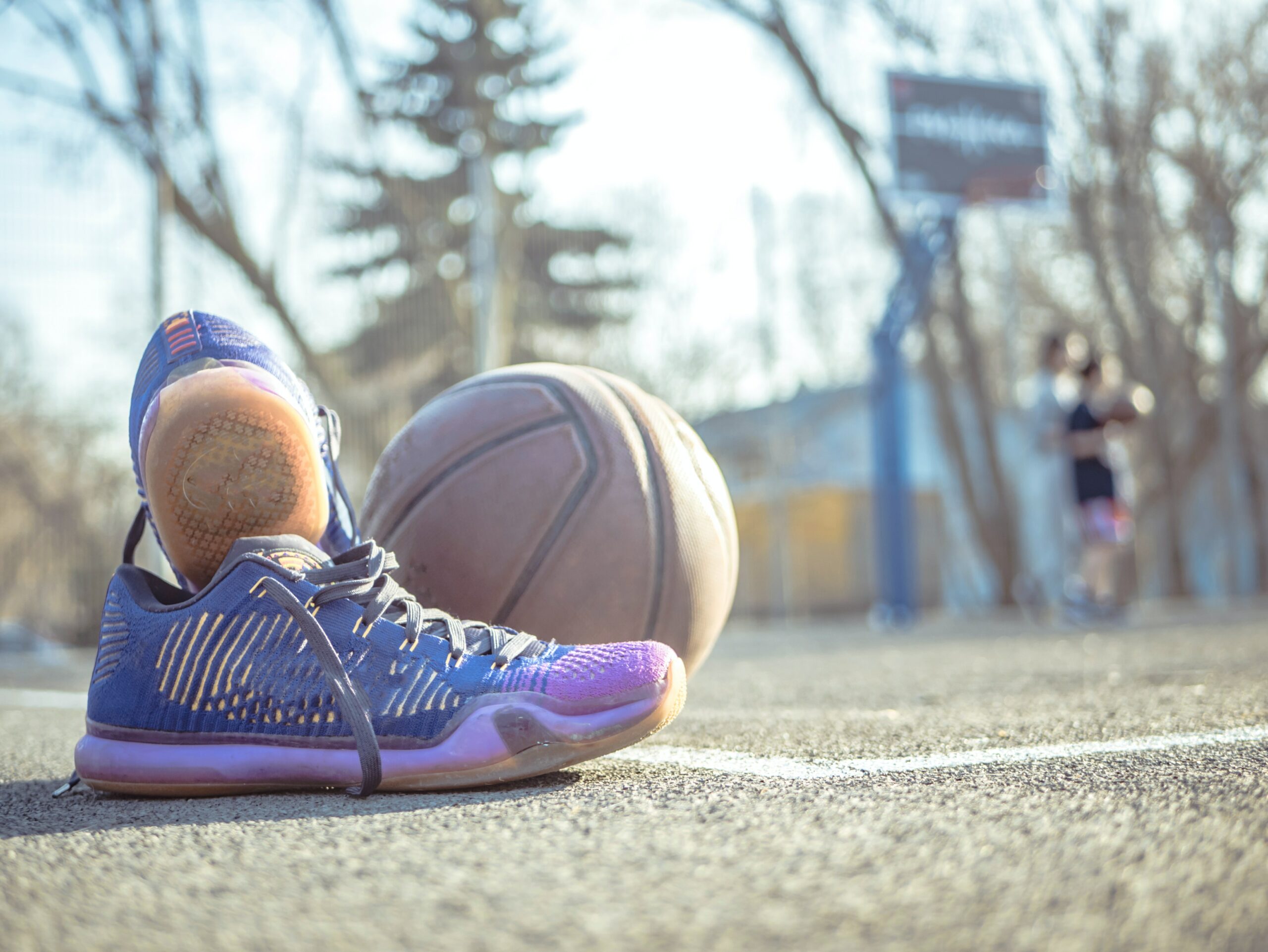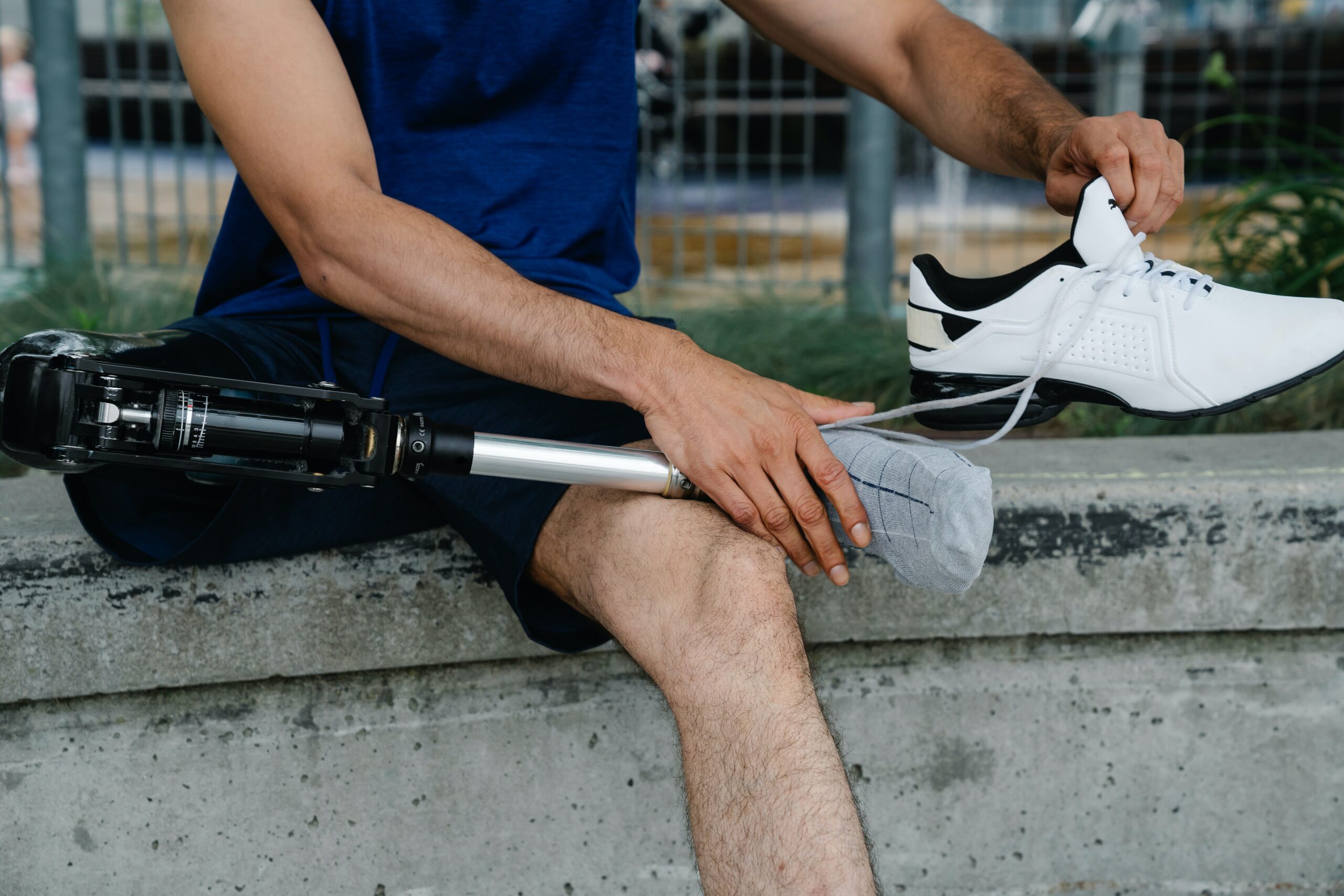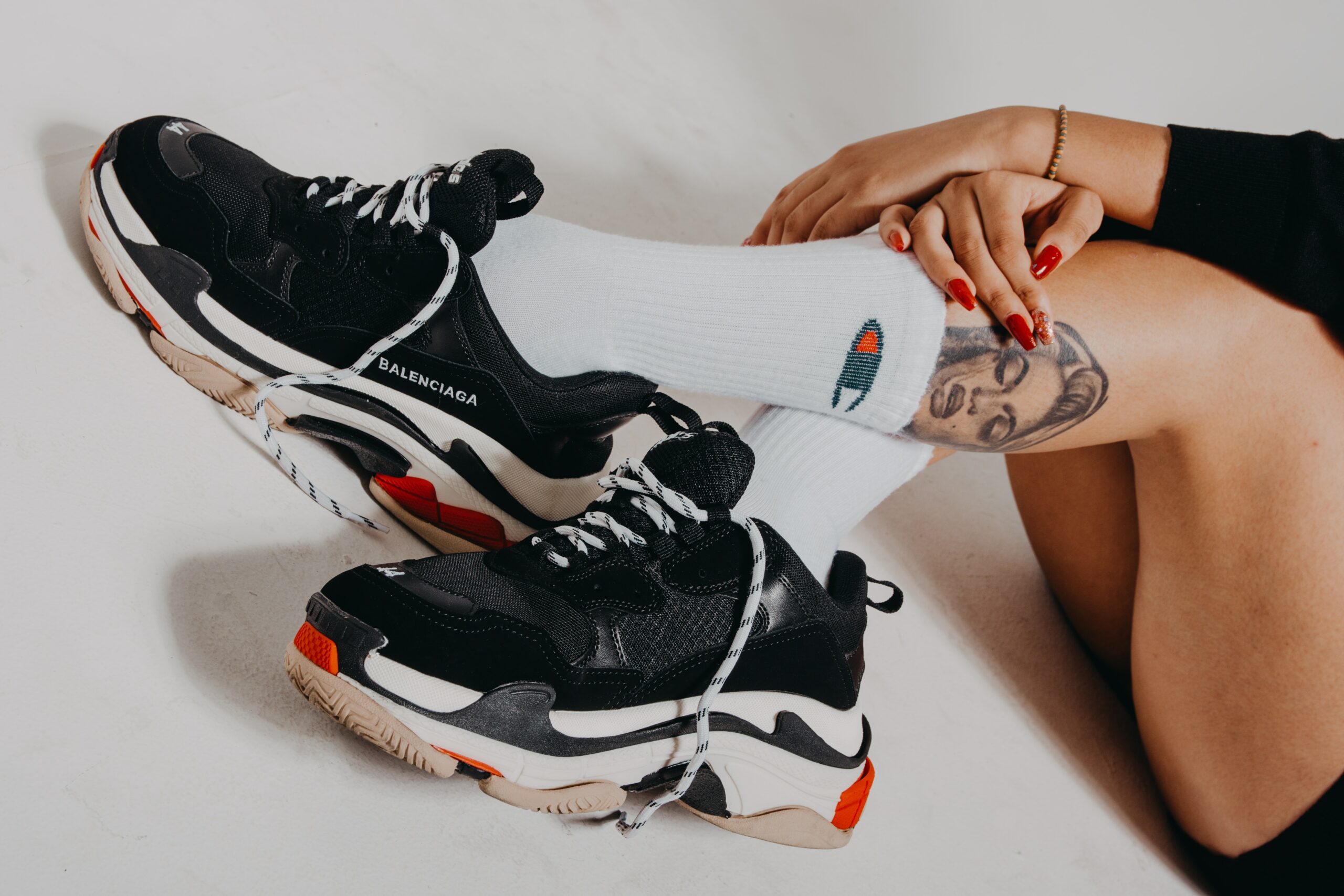Welcome to the world of indoor handball, a fast-paced and dynamic sport that demands agility, quick movements, and precise footwork. To excel in this game, having the right footwear is essential. In this article, we will explore the importance of indoor handball shoes and their unique feature: non-marking soles.
Non-marking soles provide optimal grip and stability on indoor courts without leaving unsightly marks. We will delve into the benefits of these shoes, the key distinctions from regular sneakers, and why they are a game-changer for handball players. So, let’s dive in and discover how indoor handball shoes can elevate your performance on the court.
Why are indoor handball shoes essential for the game?
Indoor handball shoes are specifically designed to meet the demands of the sport, providing players with the necessary support, stability, and traction on indoor courts. Unlike regular sneakers, they are optimized for the unique movements and agility required in handball. These shoes offer specialized features such as non-marking soles, enhanced grip, and lateral stability, enabling players to maneuver swiftly and confidently during the game.
When playing indoor handball, the quick changes in direction, sudden stops, and lateral movements put tremendous strain on your feet. Indoor handball shoes are built to withstand these challenges and offer the required support and cushioning to prevent injuries and improve overall performance. They provide a secure fit, ankle support, and superior grip, allowing you to make explosive movements and maintain balance even during intense play.
What sets indoor handball shoes apart from regular sneakers?

Indoor handball shoes have distinct features that set them apart from regular sneakers. First and foremost, they are designed with a non-marking sole, which is crucial for indoor court sports. Unlike regular sneakers with black rubber soles that can leave scuff marks on the court, non-marking soles are made of specialized rubber compounds that provide exceptional grip without leaving any traces. This is important as it ensures the integrity of the playing surface and reduces the risk of slipping or causing damage to the court.
In addition to non-marking soles, indoor handball shoes are constructed with specific materials and technologies to enhance performance. They typically feature lightweight yet durable materials such as synthetic uppers and reinforced overlays to withstand the rigors of the game.
The outsoles are designed with multidirectional patterns and specialized rubber compounds to optimize grip and allow for quick pivots and lateral movements. The midsoles offer cushioning and shock absorption to reduce the impact on your joints, while the high-top or mid-top design provides ankle support and stability.
Are non-marking soles important for indoor handball?

Non-marking soles are crucial for indoor handball for several reasons. Firstly, they ensure the integrity of the playing surface by preventing scuff marks or damage caused by traditional black rubber soles. This not only maintains the aesthetics of the court but also ensures a consistent playing experience for all athletes.
Secondly, non-marking soles provide optimal grip and traction on indoor courts, allowing players to make quick movements, sudden stops, and sharp turns without slipping or losing stability. The specialized rubber compounds used in these soles offer the right balance between grip and glide, enabling agile footwork while maintaining control.
How do non-marking soles enhance grip on indoor courts?
Non-marking soles are specifically engineered to provide excellent grip on indoor court surfaces. They feature unique rubber compounds that maximize traction without leaving marks on the floor. The tread patterns on these soles are designed to create a multidirectional grip, allowing players to move confidently in any direction.
Whether you’re making lateral cuts, performing quick pivots, or accelerating toward the goal, non-marking soles offer the necessary grip to maintain stability and control. This enhanced grip translates into improved performance, as it enables players to make precise movements, maintain balance, and execute maneuvers with confidence.
What materials are commonly used in indoor handball shoe construction?

Indoor handball shoes are typically constructed using a combination of synthetic materials. The upper part of the shoe is often made of synthetic leather or mesh, which provides durability, breathability, and lightweight performance. Synthetic materials are chosen for their ability to withstand the rigors of the game while offering flexibility and support.
Reinforced overlays are strategically placed to provide additional stability and protection in high-stress areas. The midsole of indoor handball shoes usually incorporates cushioning materials such as EVA foam or specialized gel pads to absorb impact and reduce the strain on joints and muscles. The outsole, featuring non-marking rubber compounds, is designed with multidirectional patterns to deliver optimal grip on indoor court surfaces.
Are there specific features to look for in indoor handball shoes?
When selecting indoor handball shoes, there are several key features to consider. Firstly, prioritize a snug and secure fit to ensure stability and prevent unnecessary movement inside the shoe during play. Look for shoes with a lace-up closure system that allows you to customize the fit according to your foot shape and preferences. Additionally, ankle support is crucial to minimize the risk of sprains and injuries.
Opt for shoes with a high-top or mid-top design that provides the necessary support and stability for lateral movements and quick direction changes. The cushioning system is another important feature to consider. Look for shoes with adequate shock absorption properties to reduce the impact on your joints and minimize fatigue during prolonged matches. Finally, the outsole should have non-marking properties and a tread pattern designed for indoor courts to ensure optimal grip and traction.
How do indoor handball shoes provide stability during lateral movements?
Lateral movements are a fundamental aspect of handball, and indoor handball shoes are specifically engineered to provide stability during these maneuvers. The high-top or mid-top design of these shoes offers increased ankle support, which helps to prevent ankle rolls or sprains when making quick side-to-side movements. The upper part of the shoe is often reinforced with overlays that provide additional support and stability to the midfoot and heel areas.
This construction, combined with a snug fit, ensures that the foot remains secure and stable inside the shoe during lateral movements. Furthermore, the outsole of indoor handball shoes is designed with multidirectional tread patterns and specialized rubber compounds that optimize grip and prevent slipping, further enhancing stability and control.
Can you use outdoor handball shoes for indoor play?
While it’s possible to use outdoor handball shoes for indoor play, it’s not ideal. Outdoor handball shoes are specifically designed for outdoor courts, which have different surfaces and requirements compared to indoor courts. Outdoor shoes typically have more aggressive tread patterns and durable outsoles to withstand outdoor elements, but these features can be detrimental to indoor play.
The deeper grooves and more abrasive rubber used in outdoor shoes may cause excessive traction on indoor courts, leading to potential knee and ankle injuries. Additionally, outdoor shoes often have thicker soles and heavier construction, which can hinder quick movements and agility on the indoor court. It’s best to invest in a pair of indoor handball shoes with non-marking soles for optimal performance and safety on indoor surfaces.
Are there different shoe options for different indoor court surfaces?
Yes, there are different shoe options available based on the type of indoor court surface. Handball is played on various types of indoor courts, including wood, rubber, and synthetic surfaces. Each type of surface has its own characteristics, and the choice of shoes can influence performance and grip.
For wood courts, shoes with a slightly softer rubber compound on the outsole are recommended to provide adequate grip without causing excessive stickiness. For rubber and synthetic surfaces, shoes with a slightly harder rubber compound are preferred to ensure optimal grip and minimize the risk of slipping. Understanding the type of court you’ll be playing on and selecting shoes specifically designed for that surface can enhance your performance and prevent accidents.
What role does cushioning play in indoor handball shoes?
Cushioning plays a crucial role in indoor handball shoes as it helps absorb impact, reduce the strain on your joints, and enhance overall comfort. The high-intensity movements in handball, such as jumping, landing, and sudden stops, put significant stress on the feet and lower limbs. Proper cushioning in the midsole of handball shoes helps attenuate the shock and impact generated during these movements, reducing the risk of injuries and minimizing fatigue.
Look for shoes with responsive cushioning materials, such as EVA foam or specialized gel pads, that provide a good balance between cushioning and responsiveness. The cushioning should be adequate to absorb impact without compromising stability and court feel, allowing you to perform at your best without discomfort or risk of injury.
How do indoor handball shoes support quick changes in direction?
Quick changes in direction are a common occurrence in handball, and indoor handball shoes are designed to support these movements. The key lies in their construction and features that enhance agility and responsiveness. The non-marking rubber outsole of indoor handball shoes is engineered with multidirectional patterns that allow for quick pivots and smooth transitions between movements.
This outsole design enables players to change direction rapidly without losing traction or stability. Additionally, the lightweight materials used in the construction of these shoes, coupled with a snug fit and ankle support, facilitate swift movements and rapid shifts in momentum. The combination of grip, flexibility, and stability in indoor handball shoes allows players to execute quick changes in direction with confidence and precision.
Are there specific brands known for their quality indoor handball shoes?
Several brands are renowned for their quality indoor handball shoes, offering a wide range of options to cater to different player preferences and requirements. Some popular brands include Adidas, Mizuno, Hummel, Salming, Kempa, and Asics.
These brands have established themselves in the handball community by consistently producing innovative and high-performance footwear. When selecting indoor handball shoes, it’s worth exploring the offerings from these trusted brands, as they often incorporate advanced technologies, superior materials, and extensive research to deliver shoes that enhance performance, comfort, and durability on the court.
Do indoor handball shoes affect performance and injury prevention?
Yes, indoor handball shoes significantly impact performance and injury prevention. The right pair of shoes can enhance your agility, grip, stability, and overall comfort on the court, allowing you to perform at your best. The specialized construction of indoor handball shoes, including non-marking soles, supportive upper materials, and cushioning systems, contribute to a better court feel, reduced fatigue, and improved shock absorption.
By providing the necessary grip and stability, these shoes minimize the risk of slips, falls, and ankle sprains during intense gameplay. Furthermore, the proper fit and support offered by indoor handball shoes help align the feet and lower limbs, reducing the likelihood of overuse injuries and promoting optimal biomechanics. Investing in high-quality indoor handball shoes is crucial for maximizing performance while protecting yourself from potential injuries.
How should I care for my indoor handball shoes?
Caring for your indoor handball shoes is essential to prolong their lifespan and maintain their performance. Here are some tips for proper shoe care:
- After each use, remove any excess dirt or debris from the shoes using a soft brush or cloth.
- If your shoes are wet, allow them to air dry naturally at room temperature. Avoid exposing them to direct heat sources, as this can damage the materials.
- To control odors, use odor-absorbing insoles or sprinkle baking soda inside the shoes overnight. This will help neutralize any unpleasant smells.
- Regularly clean the shoe’s upper with a mild soap solution and a damp cloth. Avoid using harsh chemicals or abrasive materials that can damage the shoe’s materials.
- Check the shoelaces periodically and replace them if they are worn or frayed.
- Store your indoor handball shoes in a cool, dry place away from direct sunlight to prevent discoloration or deterioration of the materials.
By following these care guidelines, you can extend the lifespan of your indoor handball shoes and ensure they continue to provide optimal performance and support.
How do indoor handball shoes contribute to player confidence?
Indoor handball shoes play a significant role in boosting player confidence on the court. When you have the right pair of shoes that offer optimal grip, stability, and comfort, you can focus entirely on your performance without worrying about slipping, losing balance, or discomfort. The non-marking soles provide the necessary traction, allowing you to make quick movements, cuts, and pivots confidently.
The supportive construction of indoor handball shoes, including ankle support and cushioning, instills a sense of security and reduces the risk of injuries. When you feel secure and stable in your shoes, your movements become more fluid and natural, enhancing your overall performance. The combination of functionality, performance-enhancing features, and style in indoor handball shoes contributes to a player’s self-assurance, allowing them to fully express their skills and enjoy the game to the fullest.
Conclusion
Indoor handball shoes are specifically designed to provide optimal grip, stability, and performance on indoor court surfaces. The non-marking soles ensure the integrity of the playing surface while offering excellent traction and minimizing the risk of slips and falls.
These shoes are constructed using synthetic materials that balance durability, breathability, and support. They incorporate features like ankle support, cushioning, and responsive midsoles to enhance comfort and reduce the strain on joints. When selecting indoor handball shoes, consider factors such as fit, ankle support, cushioning, and the type of court surface you’ll be playing on.
Investing in high-quality indoor handball shoes not only enhances your performance but also reduces the risk of injuries, allowing you to play with confidence and agility. So lace up your shoes, hit the court, and unleash your full potential in the game of handball!